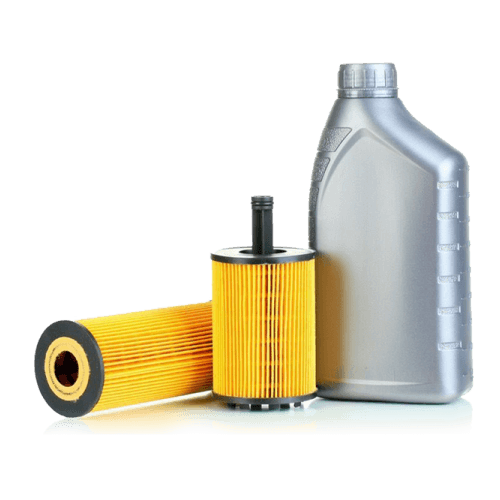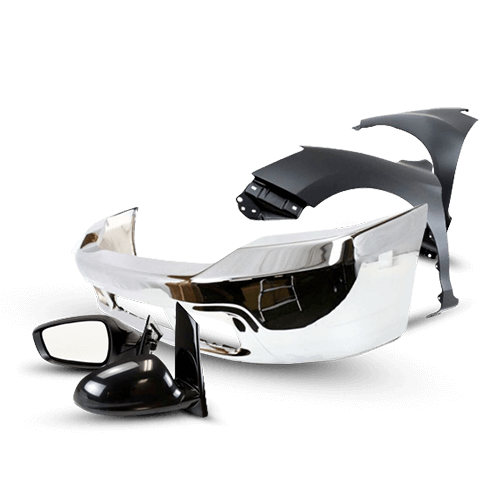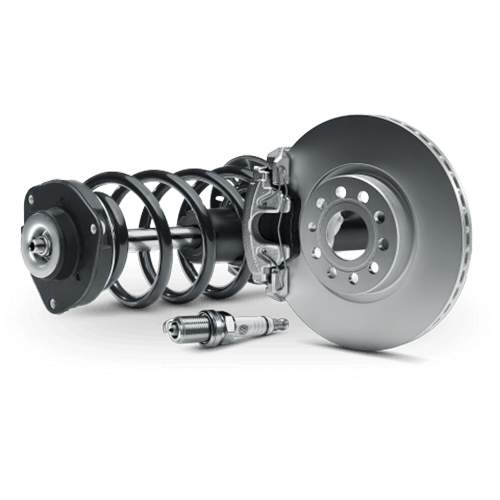
All You Need to Know About BMW Electric Water Pump Replacement
As a BMW owner, you know the importance of maintaining your vehicle's cooling system to ensure optimal performance and longevity. One critical component in this system is the electric water pump, which plays a vital role in circulating coolant throughout the engine. In this comprehensive guide, we'll explore everything you need to know about BMW electric water pumps, including their function, common failure signs, replacement process, and more.
Understanding BMW Electric Water Pumps
BMW's modern vehicles are equipped with electric water pumps, which are a significant departure from the traditional mechanical water pumps found in older models. These electric pumps are designed to provide more precise and efficient coolant circulation, contributing to improved engine cooling and overall system performance.
The primary function of the electric water pump is to circulate coolant through the engine block, cylinder heads, and radiator, ensuring that the engine maintains a consistent and optimal operating temperature. Unlike mechanical pumps, which rely on the engine's rotation, electric water pumps are powered by an independent electric motor, allowing for more precise control and responsiveness.
One of the key advantages of BMW's electric water pumps is their ability to operate independently of the engine's RPM. This means that the pump can continue to circulate coolant even when the engine is idling or at low speeds, helping to prevent overheating and maintain optimal temperature regulation.

Common Signs of a Failing Electric Water Pump
As with any component in your BMW's cooling system, the electric water pump is susceptible to wear and tear over time. Recognizing the signs of a failing pump can help you address the issue before it leads to more serious problems. Some of the most common indicators of a malfunctioning electric water pump include:
- Overheating issues: If your BMW is experiencing frequent or persistent overheating, it could be a sign that the electric water pump is not circulating coolant effectively.
- Coolant leaks: Leaks around the water pump or in the surrounding areas may indicate a problem with the pump's seals or housing.
- Warning lights and error codes: Your BMW's onboard diagnostics system may trigger a warning light or generate error codes related to the cooling system, which could point to a faulty electric water pump.
If you notice any of these signs, it's essential to have your BMW inspected by a qualified technician to diagnose and address the issue promptly.
Replacing the Electric Water Pump
When it comes time to replace your BMW's electric water pump, it's important to follow the proper procedures to ensure a successful and safe installation. Here's a step-by-step guide to the replacement process:
- Gather the necessary tools: You'll need a set of socket wrenches, pliers, a coolant drain pan, and a new OEM or high-quality aftermarket electric water pump.
- Drain the coolant: Locate the coolant drain plug or valve and drain the coolant from the system into the drain pan.
- Disconnect the electrical connections: Identify and disconnect the electrical connectors that are attached to the water pump.
- Remove the old water pump: Carefully remove the bolts or screws that secure the water pump to the engine block, and then gently pull the pump out.
- Install the new water pump: Ensure that the new pump's gasket or O-ring is in good condition, and then carefully align and secure the new pump in place.
- Reconnect the electrical connections: Reattach the electrical connectors to the new water pump.
- Refill the coolant system: Slowly pour new coolant into the system, following the manufacturer's recommended specifications and quantities.
- Bleed the cooling system: Start the engine and allow it to run for a few minutes, then check the coolant level and top it up if necessary.
It's important to note that the specific steps may vary depending on your BMW model, so it's always best to consult your owner's manual or a professional technician for the most accurate and up-to-date instructions.
OEM vs. Aftermarket Electric Water Pumps
When it comes to replacing your BMW's electric water pump, you have the option of choosing an OEM (Original Equipment Manufacturer) part or an aftermarket alternative. Each option has its own advantages and disadvantages, so it's essential to weigh the pros and cons before making a decision.
OEM electric water pumps are designed and manufactured by BMW specifically for your vehicle, ensuring a perfect fit and compatibility. These parts are often more expensive but offer the assurance of quality and reliability. Aftermarket pumps, on the other hand, are produced by third-party manufacturers and may be more affordable, but their quality and performance can vary.
When selecting an aftermarket electric water pump, it's crucial to choose a reputable brand that is known for producing high-quality parts. Some of the recommended brands for BMW electric water pumps include VDO, Saleri, and Pierburg. These manufacturers have a proven track record of producing durable and reliable components that can match or even exceed the performance of OEM parts.
Maintaining and Caring for Your BMW's Electric Water Pump
To ensure the longevity and optimal performance of your BMW's electric water pump, it's essential to follow a regular maintenance routine. Here are some tips to help you keep your water pump in top condition:
- Regularly inspect the pump: During routine maintenance or when servicing your BMW, have a technician visually inspect the water pump for any signs of wear, leaks, or damage.
- Monitor the coolant level: Keep a close eye on your BMW's coolant level and top it up as needed, as low coolant can contribute to water pump failure.
- Replace the coolant as recommended: Follow the manufacturer's guidelines for coolant replacement intervals to ensure the system remains clean and free of contaminants.
- Address any cooling system issues promptly: If you notice any signs of a problem, such as overheating or coolant leaks, have the issue diagnosed and addressed as soon as possible to prevent further damage.
By following these maintenance best practices, you can help extend the lifespan of your BMW's electric water pump and ensure the continued smooth operation of your vehicle's cooling system.
The Relationship Between the Water Pump and Thermostat
The electric water pump and the thermostat work in tandem to regulate the temperature of your BMW's engine. While the water pump is responsible for circulating the coolant, the thermostat plays a crucial role in controlling the flow of coolant based on the engine's temperature.
The thermostat is a temperature-sensitive valve that opens and closes to allow or restrict the flow of coolant through the system. When the engine is cold, the thermostat remains closed, allowing the coolant to quickly reach the optimal operating temperature. Once the desired temperature is reached, the thermostat opens to allow the coolant to circulate through the radiator, dissipating the excess heat.
If the thermostat becomes stuck in the open or closed position, it can disrupt the proper functioning of the cooling system and lead to issues such as poor temperature regulation, engine overheating, or even coolant leaks. As such, it's important to replace the thermostat alongside the electric water pump if you suspect any problems with the cooling system.
Cost Considerations for Electric Water Pump Replacement
The cost of replacing your BMW's electric water pump can vary depending on several factors, including the specific model, labor costs, and whether you choose an OEM or aftermarket part.
On average, the cost of an OEM electric water pump for a BMW can range from $1000 to $2000, depending on the model and year. Aftermarket alternatives may be more affordable, typically costing between $500 and $800.
In addition to the cost of the water pump itself, you'll also need to factor in the labor costs for the replacement. Depending on the complexity of the job and the mechanic's hourly rate, the labor cost can range from $400 to $600 or more.
If you're comfortable with DIY repairs, you can potentially save on labor costs by performing the water pump replacement yourself. However, it's important to ensure that you have the necessary tools, skills, and safety equipment to complete the job properly.
Troubleshooting Common Electric Water Pump Issues
Despite the advanced design and engineering of BMW's electric water pumps, they can still experience various issues over time. Here are some common problems you may encounter and how to address them:
- Overheating: If your BMW is experiencing persistent overheating, it could be due to a malfunctioning electric water pump. Check for any signs of leaks, electrical issues, or debris buildup that may be impeding the pump's performance.
- Coolant leaks: Coolant leaks around the water pump or in the surrounding areas may indicate a problem with the pump's seals or housing. Inspect the pump for any cracks or damage and replace it if necessary.
- Warning lights and error codes: If your BMW's onboard diagnostics system is triggering a warning light or generating error codes related to the cooling system, it's essential to have the issue diagnosed by a qualified technician. They can use specialized tools to pinpoint the root cause of the problem.
- Unusual noises: If you notice any unusual noises, such as whirring, grinding, or rattling, coming from the water pump area, it could be a sign of a mechanical issue that requires immediate attention.
If you encounter any of these problems, it's crucial to address them promptly to prevent further damage to your BMW's engine and cooling system. Seeking the assistance of a professional technician is often the best course of action, as they can accurately diagnose the issue and provide the necessary repairs.
Conclusion
The electric water pump is a critical component in your BMW's cooling system, and understanding its function, common failure signs, and proper maintenance is essential for ensuring the longevity and performance of your vehicle. By following the guidance provided in this comprehensive guide, you can make informed decisions about electric water pump replacement, whether you choose an OEM or aftermarket part, and ensure that your BMW's cooling system continues to operate at its best.
Remember, regular inspections, timely replacements, and proper maintenance of your BMW's electric water pump can go a long way in preventing costly repairs and keeping your vehicle running smoothly for years to come.






















































